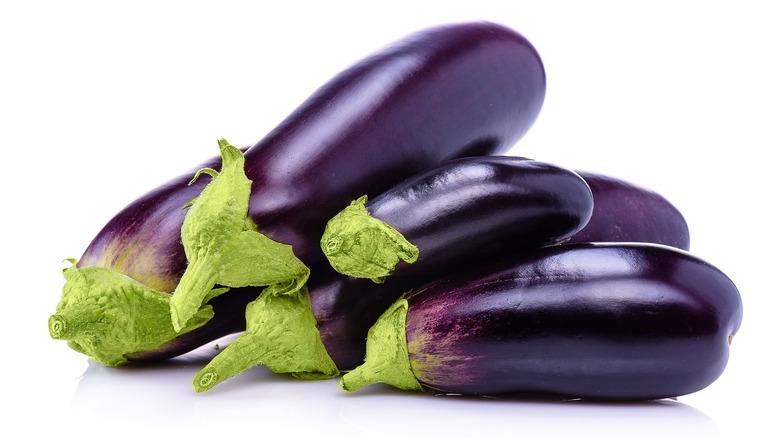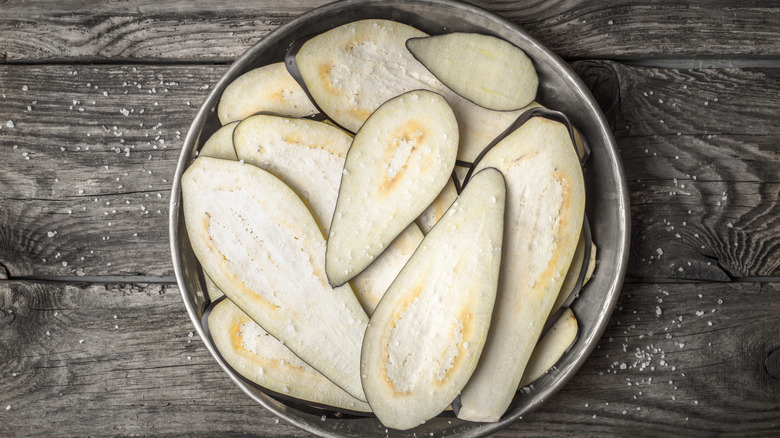What Exactly Does It Mean To Sweat An Eggplant?
How do you make an eggplant sweat? It sounds like the beginning of a bad joke. But it's a real thing: Sweating is the first step in many recipes for Eggplant Parmigiana. It might sound gross, but sweating is really just a way of preconditioning eggplant before coating and frying it.
The process involves coating slices of eggplant with a layer of salt on both sides and letting them rest. The salt draws water out onto the surface of the vegetable, causing beads of moisture to appear, which is where the term "sweating" comes from: The eggplant looks like it's perspiring, which it is — just in a nice, sweet-smelling way. After the veggie has sweated, you can proceed along your merry way with whatever you're making.
The technique has a two-fold purpose. First, it makes the vegetable drier, which helps it absorb less oil while it cooks. Historically, sweating was part of its preparation to make eggplant less bitter. Extracting moisture meant drawing out some of the bitter notes that were present. This may be surprising to modern eaters who don't think of eggplants as having much of an edge: Modern cultivation has almost entirely eliminated most of the objectionable flavors from eggplants.
To sweat or not to sweat eggplants
Sweating eggplants used to be a pretty necessary first step, almost like pitting an avocado or peeling an onion. Nowadays it's not very important, which is why some argue it's entirely superfluous – and time-consuming.
When is it useful? There are a few times and ways when salting is still worth the extra effort. It's always best to cook with fresh eggplants when possible, since older eggplants may have acquired some unpleasant notes as they've aged. If your eggplants have gotten bitter, sweating them can help draw out any dissonant notes, though salting them right before cooking may be just as good at taming their bitterness. Second, salting in advance helps season the eggplant more thoroughly and may make a marginal difference in their oil absorption, improving their texture and overall flavor. Last but not least, if you happen to be following a traditional recipe where leaving out a step may feel taboo, go ahead and sweat the eggplant.
Comfort is important in the cooking process as well as the product, and it may be hard to give up on your grandmother's way of doing things. If you want to keep the concept but modernize and streamline the process, you can try microwaving your eggplant to get the same effect. At the end of the day, this is one decision you really don't need to sweat.

